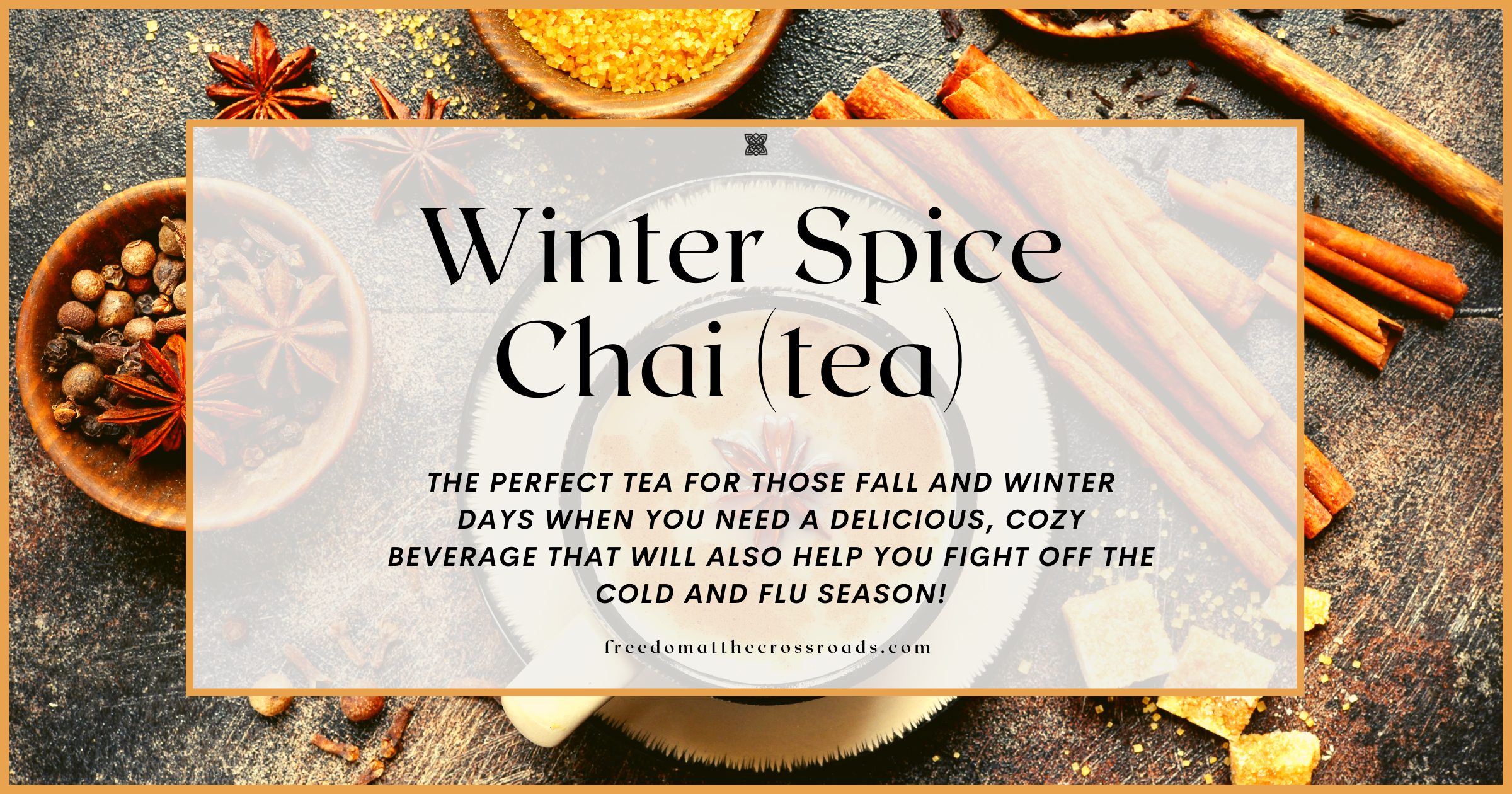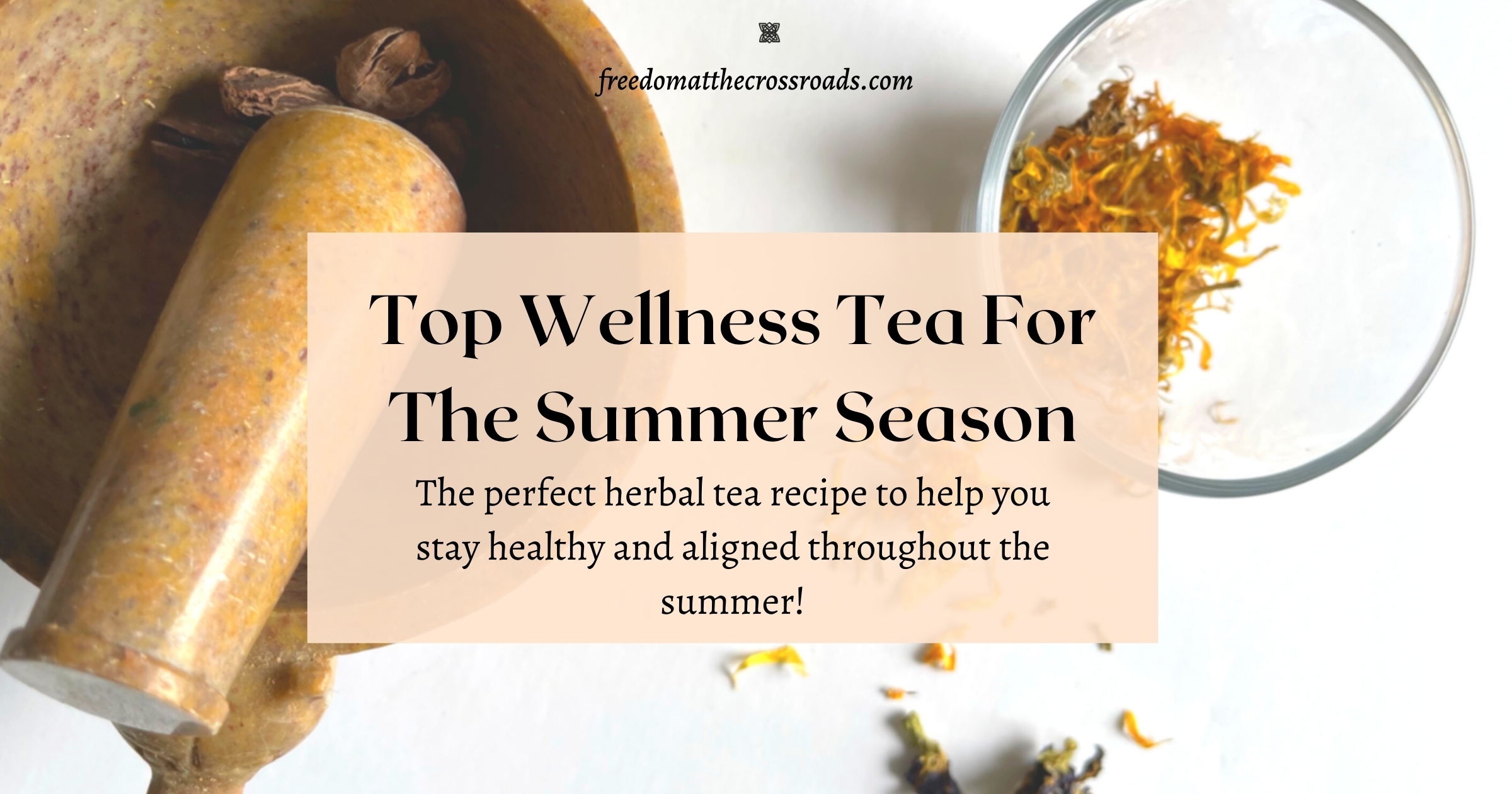It’s the of summer but let’s not forget we’re still in the middle of a global pandemic! That means, no scrimping on selfcare in order to stay health and aligned. For me, a summertime wellness tea is an excellent way to help my body continue to naturally fight off pathogens.
My thoughts for this summer
As always, make sure you research your herbal ingredients as well as make sure they are pesticide-free! Over the last few years, I’ve crafted a variety of herbal tea blends for each season. As an intuitive lay herbalist, I bring together ingredients based on their properties and align them with my body’s needs.
I took this current state of the world as a sign to majorly reconnect with my herbal traditions. I’ve since labeled up my selfcare toolkit, resources, and training. Today’s recipe is a deliciously natural way to support the body in fighting off ailments. I believe the solution to most diseases and illnesses, can be sourced from nature to work with the body’s natural defenses.
*please note that this post contains some Amazon affiliate links and as an affiliate I do receive a small percentage from the sales any items using these links!
The reality
Unfortunately, we live in a society that glorifies synthetic chemicals, big pharma, and the destruction of the natural world. The very people that are push drugs and the use of chemicals in our food systems are the same ones telling us not to look for natural alternatives. As for me and my family, we’ll still to our traditional remedies and limit our use of conventional forms.
My experience has shown that my body (and my community agrees), responds better to our traditional herbal remedies. Again, I’m by no means a medical practitioner, and strongly suggest you see your physician for any issues.
About this tea
Having said that, my summer wellness tea blend is one of many I create for myself and my family to deal with allergies, boost immunity, etc. I often make a large kettle of it and then sweeten it with raw honey. I switch up the ingredients intuitively, depending on what I feel my body needs (i.e stress reduction, immune boost, etc). To be honest, I think everyone needs to have a wellness tea as part of their health and wellness routine. Herbs and spices have been used for centuries, to fight disease, ease chronic conditions, detox the body, and just overall wellness.
My story
I started to really lean into my herbal roots when I found that my seasonal allergies, cold, and flu symptoms dramatically decreased when I switched to herbal and natural remedies. Also, I see that as I get older, my body feels healthier and more aligned when I avoid using pharmaceuticals to ease discomfort and other ailments. Add in spices like ginger, turmeric, cardamom, etc and the relief goes to a whole new level!
For example, Instead of using synthetic sleep aids for insomnia, anxiety, or fatigue I’ve switched to traditional herbal alternatives. Plus, since I don’t like “popping pills” (and neither does my family), I was forced to create tasty teas and tinctures instead.

My tea craze
I have to confess, I have a tea obsession, and if it helps my body heal and fights off the bad stuff too? Then sign me up! I believe everything has its place. Wellness must always be holistic and look at the whole person. Unfortunately, this is not true for many western concepts of health and wellness. Since I believe my food should heal and nourish, my herbal tea recipes fall into that philosophy.
What’s in it
This latest recipe contains, dried rose hips, lemon balm, marshmallow root, calendula flower, butterfly pea flower, chamomile flower, cardamom pods, elderberries, and licorice root. On a side note, I get all of my ingredients from small specialty stores on Etsy that are pesticide-free and ethically sourced. But amazon you can also get organic ingredients on Amazon as well, just do your research.
My personal guide
Sometimes, I add more of one ingredient over the others because I feel my body might need more support in a certain area. If I’m dealing with a lot of stress, I might add more elderberries and rose hips to the mix. Other times, it just depends on what my intuition is telling me about my body’s needs at a particular time. This why a selfcare practice is so important. When you “selfcare” you are more connected and aware of your body. As a result, you’re better able to discern what your needs are and make adjustments.
Recipe guide (how much of each ingredient)
Since I like to keep things simple, I measure in terms of teaspoons or parts. Just make sure you stay consistent with your measurements. Also, be sure to check with your doctor to make sure it’s okay for you to consume these ingredients (i.e. you don’t have any allergies or reactions with medication, etc).
Ingredients for my wellness tea
- Dandelion (root, leaf, and flower): is a liver tonic or blood purifier, optimizes digestion, stimulates bile, a great source of potassium, iron, calcium, and vitamins (A, B, C. D).
- Calendula (flower): nourishes and cleanses the lymphatic system and moves congestion out of the body. It’s also great for treating gastrointestinal issues and indigestion.
- Rosehips: rich in anti-oxidants, protects again heart disease, anti-inflammatory, anti-aging, boost immunity, and lowers blood sugar.
- Chamomile flower: anti-inflammatory, improves sleep, digestive health, aides blood sugar control as well as anti-cancer properties.
- Cardamom pods: good for boosting digestive health. The cooling effects of cardamom, despite being a spice, can help in relieving acidity
- Elderberries: are packed with antioxidants, vitamins, anti-inflammatory, boost immunity, high in vitamin C, supports heart health, anti-cancer properties, as well as antidepressant properties.
- Lemon balm:
reduces stress and anxiety, eases indigestion, improves sleep, anti-viral, IBS symptoms, boost brain health, relieve nausea and pain reducer.
- Marshmallow root: is antimicrobial, anti-inflammatory, treats acid reflux, heartburn, good for the respiratory tract, detoxes kidneys and is antibacterial.
- Butterfly pea flower: fights fatigue, anti-inflammatory, rich in antioxidants, boost heart health, improves brain health, and is great for the skin.
- Licorice root: gets rid of bloating, reduces digestive issues, acid reflux, a good source of vitamins (A,C, E)helps with liver health, antiviral, respiratory and other infections.
where I get some of ingredients (Amazon)
- Elderberries : https://amzn.to/3iBo1tJ
- Raw honey, organic: https://amzn.to/3nrh95Q
- Rosehips : https://amzn.to/2GLWLLx
- Chamomile: https://amzn.to/3jCjjNp
You should be able to find the rest at your local health food store or Etsy. Let me know in the comments, if you’ve got some other great sources as well.
I usually get my ingredients from organic suppliers in the US. Amazon also has some trustworthy sources, you just have to do a little research. Here’s just a few of the sources I use on Amazon:
How to brew this wellness tea
For any herbal tea, you want make sure that you don’t brew it too hot or else you’ll destroy most of its benefits. I go by a simple rule: delicate flowers and leaves, low heat, while roots and fibers med to medium high heat.
Also, the longer you allow it to steep, the more concentrated it will be. To get the maximum benefits I usually steep my teas for at 15 mins and sweeten with raw honey. Don’t forget, raw honey has a number of healing benefits too. This recipe is perfect over ice as a delicious morning detox tea or hot. You can check out more of my favorite tea recipes right here!
Like this:
Like Loading...






